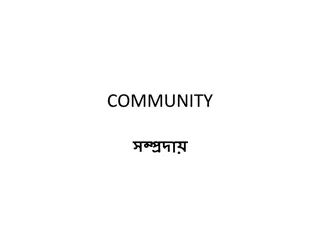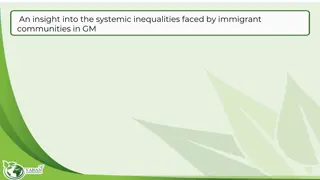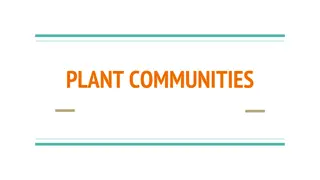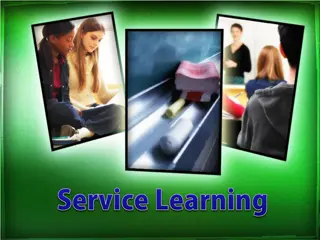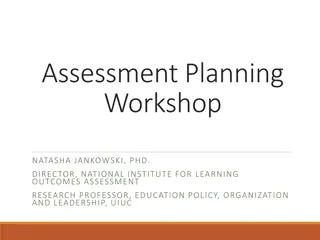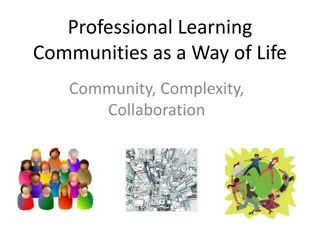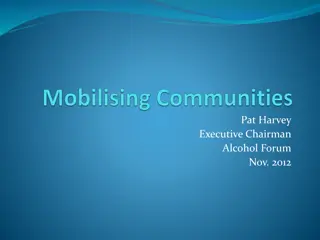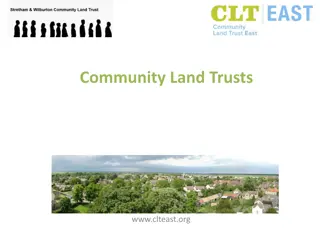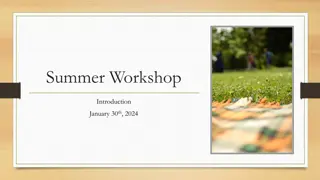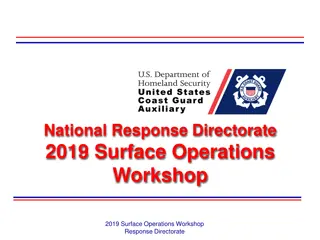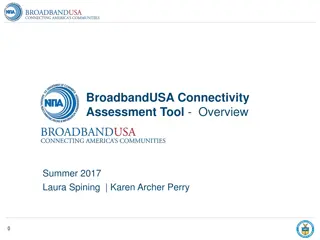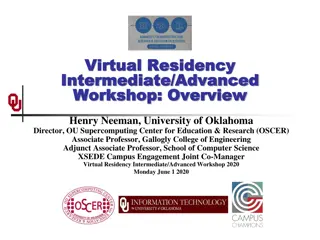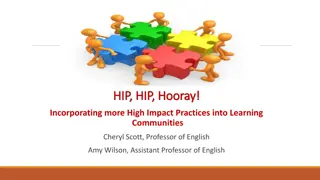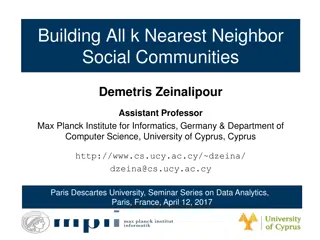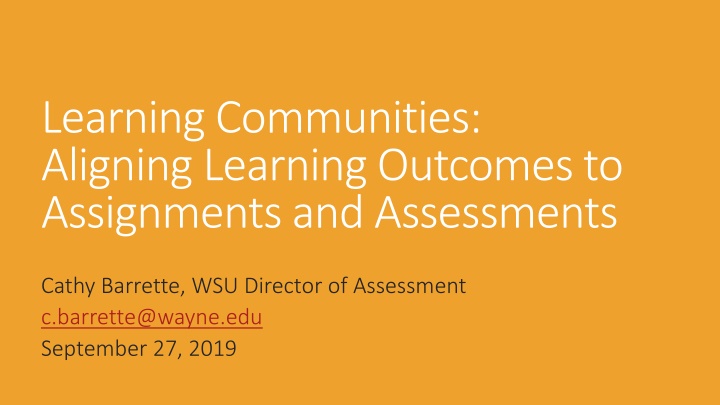
Aligning Learning Outcomes with Assignments and Assessments in Learning Communities
Learn how to align Learning Communities Program outcomes with assignments and assessments. Discover the characteristics of good learning outcomes, revise individual LC outcomes, and align activities to support the Learning Community Program outcomes effectively.
Download Presentation

Please find below an Image/Link to download the presentation.
The content on the website is provided AS IS for your information and personal use only. It may not be sold, licensed, or shared on other websites without obtaining consent from the author. If you encounter any issues during the download, it is possible that the publisher has removed the file from their server.
You are allowed to download the files provided on this website for personal or commercial use, subject to the condition that they are used lawfully. All files are the property of their respective owners.
The content on the website is provided AS IS for your information and personal use only. It may not be sold, licensed, or shared on other websites without obtaining consent from the author.
E N D
Presentation Transcript
Learning Communities: Aligning Learning Outcomes to Assignments and Assessments Cathy Barrette, WSU Director of Assessment c.barrette@wayne.edu September 27, 2019
Session Learning Outcomes (LOs) Restate the Learning Communities Program(LCP) LOs in your own words Identify activities or assignments in your LC that support each LC LO Verify that your plan supports all LCP LOs and all of your individual LC LOs
LCP LOs With the support of the Learning Communities Program, 1. Learning Community Coordinators will create a community of learners. Definition Definition: A community of learners is a group of individuals who value, engage with, and feel a strong sense of membership in that group. Learning and connection are central purposes of the group. 2. Learning Community Coordinators will design activities that incorporate HIP characteristics, as outlined by AAC&U, for improved student success. 3. Learning Community Coordinators and peer mentors will collaboratively implement activities to achieve individual LCs learning outcomes.
Characteristics of Good LOs Definition Definition: Learning outcomes are statements that articulate what students should know, value, or be able to do as a result of participating in your program. Characteristics of good LOs: Characteristics of good LOs: Pitfalls to avoid: Pitfalls to avoid: Identify a measurable behavior Identify a vague behavior Include only one behavior per outcome Include multiple behaviors per outcome Focus on the results of learning Focus on the process or activities of learning Bloom s Taxonomy is a great source of action verbs for your LOs!
Draft or Review Your LCs LOs FOR LCs WITH WITH LOs: REVISE FOR LCs WITHOUT WITHOUT LOs: DRAFT Complete the following statement with 3 measurable behaviors identifying what participating students will know or be able to do at the end of the semester: Use the characteristics of good LOs to evaluate and revise your individual LC s LOs. Bloom s Taxonomy is a helpful tool. Ask a partner to give feedback on your revision. Students will be able to 1. 2. 3.
Aligning Activities with the LCP LOs LO2: Use LO2: Use HIP activities HIP activities Writing good LOs is only step 1. Alignment is step 2. LO1: Build LO1: Build community community Definition: Definition: Alignment is the process of deliberately matching activities to the outcomes they support. LC activity LC activity LC activity LCP example: LCP example: One of Amy s LCP goals is for you to implement high impact practices. To do so, you need to learn what HIPs are and how to integrate them into your LCs. To help you build your knowledge of HIPs and their implementation, at each LC Coordinator meeting, individual LCs will present and discuss how they are implementing HIP characteristics. Each month will focus on different HIP characteristics.
Brainstorm Aligned Activities 1. Pick one of the LCP LOs (build community or implement HIPs activities) to focus on. 2. Form a group based on your choice. 3. Work in a the group to brainstorm activities that your individual LCs might do to help achieve that LCP LO. 4. Choose one person from your group to share ideas with the whole group.
Mapping A mapping table is an easy tool for ensuring that you have activities to support all of the LCP LOs and all of your individual LC s LOs: LCP LO3: Achieve individual LCs LOs Individual LC LO1: LCP LO2: I Implement mplement HIPs activities HIPs activities LCP LO1: Build community Individual LC LO2: LC Activities: LC Coordinator presentations of HIPs examples at monthly meetings Connection before content activities at monthly meetings X X
Assessing Your Learning Outcomes Assessment s fundamental question: Assessment s fundamental question: How will you know whether students learned what you wanted them to learn? Example: Amy wants to know whether you learned how to Example: Amy wants to know whether you learned how to design activities that incorporate HIP characteristics incorporate HIP characteristics design activities that Some possible assessment methods: observational checklist, lesson plans, reflective journal entries, survey of students, peer mentors, and/or coordinators Pick one of your LC s LOs. Brainstorm ways you might assess whether students learned Pick one of your LC s LOs. Brainstorm ways you might assess whether students learned what you wanted them to. what you wanted them to.
Next Steps Refine your LC s LOs. Fill in the mapping table with your LC s LOs and activities. Mark which activities support each LO. Identify gaps and fill them. Identify at least one assessment method for each LO.
Questions and Support Questions? Comments? Questions? Comments? For more support: Cathy Barrette, WSU Director of Assessment Cathy Barrette, WSU Director of Assessment (c.barrette@wayne.edu) individual meetings, feedback on drafts, and more WSU WSU Assessment website Assessment website assessment handbooks, tutorials, many examples (https://wayne.edu/assessment/) Office for Teaching and Learning Office for Teaching and Learning workshops, individual consultations


